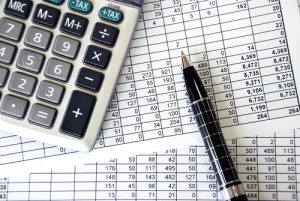 {4:36 minutes to read} Everyone is familiar with the expression “living from paycheck to paycheck.” And most of us know people who are actually living from paycheck to paycheck, including ourselves in some cases.
{4:36 minutes to read} Everyone is familiar with the expression “living from paycheck to paycheck.” And most of us know people who are actually living from paycheck to paycheck, including ourselves in some cases.
What you may find surprising, however, is that it doesn’t really matter what your income is. Most believe this lifestyle is reserved for low- to medium-income families, but there are people with very high incomes who have the same problem.
For example, let’s say that someone is earning $500,000 as an employee. About 45% of that is taxable, leaving you with $275,000 to live on. Out of that $275,000:
- Rent in Manhattan may run $7,000 a month.
- People may have a second or vacation home, with a mortgage of $5,000 per month, and they may be using it only 3 months out of the year.
- People like to eat out and entertain others.
- People travel and take exotic vacations.
Most of the money that’s going out is for discretionary expenses, and a lot of it is also just lifestyle choices. Choices can be changed, but oftentimes people rationalize that these expenses are necessary for their lifestyle and/or for the type job that they do. Unfortunately, “living from paycheck to paycheck” is perpetuated by the number of unnecessary expenses that are taken on.
“Paycheck to paycheck” living is one of the reasons most people have meager savings, or none at all. A financial adviser will generally advise individuals to have 3-6 months of living expenses in a savings account, like a rainy day fund. They should be building that over time, whether it’s for business or personal.
But there never seems to be any extra money to build a savings account, so the average person I deal with doesn’t have that cushion.
On the business side, I deal with companies who maybe have 2-25 employees, and in most cases, the owner doesn’t even take a salary from the company. The employees are generally making much more than the owner.
Oftentimes when I meet with clients, they may not have had a clue as to how much they are spending on a monthly basis, but most use a credit card. American Express, for example, has a year-end statement that literally collates all the expenses made in a year and categorizes them. For example, you’d have the total spent on travel, restaurants, entertainment, repairs, etc. for the year. The credit card statement is a useful tool to track your spending habits on an annual basis; however, monthly tracking of your expenses is better.
Another example: someone who is self-employed, making $400,000 gross, could possibly have a $70,000 tax bill, but did not factor in this cost as an expense. To be proactive, create a savings account and set aside money to help pay that tax bill when it is due. This will help alleviate anxiety when your tax returns are being prepared.
There is no denying that changing habits is not easy, but if you want to build that cushion so that paying bills becomes just another household task instead of a complicated mathematical exercise to make the paycheck stretch without breaking, we can help.
We will help you analyse your finances and see where you could make certain minor lifestyle changes that will allow you to create a little bit more cushion toward your savings goal and financial independence. If you are interested in getting off the paycheck-to-paycheck treadmill, give us a call.
Nadine Riley, CPA
Founder, Masterpiece Accounting Group
Phone: (212) 966-9301
Email: info@mpagroupllc.com

